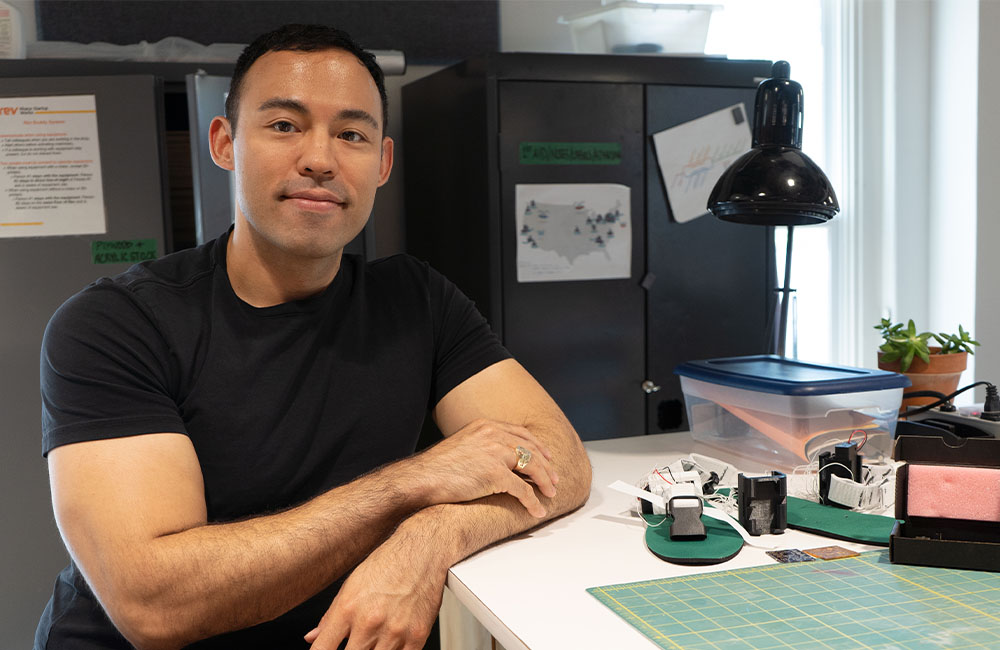
Hardware Accelerator Team Spotlight: Stead-Ease
#HardwareAccelerator19 Team Stead-Ease, is focused on helping the geriatric population remain independent. Team members Mark Lawley and Veronica Weser’s previous doctoral work helps those who have lost sensation in their feet continue to live a normal life
What problem do you solve for the market?
A fear of losing independence due to loss of sensation in the feet. This is a problem because if you can’t feel the ground very well while you are walking, you are more likely to fall down. Being elderly and falling is a major problem, as it indicates frailty. The people who are worried about their balance when they are walking are really afraid of losing their independence and feeling like they are a burden to their loved ones.
Who is your customer?
A geriatric population with peripheral neuropathy in the feet. Peripheral Neuropathy is a loss of sensation that is often found in the hands and the feet. It starts like the way you would put on a glove or a sock, from the finger or toes and then up the arms and legs. On an emotional level we want to help the geriatric population suffering from this maintain their independence and furthering on that, we don’t want people to fall down. In the medical field, a fall is strong indication of frailty. This is something that we want to prevent. Diabetes, chemotherapy, spinal injuries, are just some of the factors that cause peripheral neuropathy. Research has found it is more likely to be a balance issue than a core strength issue.
What is your innovation or solution?
We are designing a device that retrains gait via sensation remapping. The shoe insert we created will provide biofeedback each time you take a step, which will help your nervous system retrain awareness of the position of your feet. By translating the motion of walking into haptic feedback, we hope to prevent falls.
How did you come up with this idea?
Based on Dr. Veronica Weser’s doctoral work. A lot of Dr. Weser’s research is in human perception, and the neuroscience behind it. The idea transitioned from general human perception to the creation of a device for the geriatric population when we began discussing the applications of Veronica’s research. We were friends before we had the idea, and we knew that we would make a great team, After a life changing event, Mark became interested and invested in preventing falls in the elderly and it seemed as if our interests aligned perfectly. We both have a strong personal connection to this problem, so we felt like we could not turn down an opportunity to pursue a solution.
What has been the biggest surprise? What has been the most eye-opening experience so far?
Among the many moments during ongoing customer discovery and prototype iteration: how intensely our customer wants to maintain independence. We were shocked at the drastic measures people considered taking just to hold on to their independence. Another eye-opening experience was learning about the difference between faith-based entrepreneurship, having a vision and knowing it will work because I feel it in my heart (what we were originally doing), versus scientific-method based entrepreneurship where you preregister your hypothesis and speak to the customer. We learned that you don’t tell your potential customer what you are creating, but collect data to improve or reject your hypothesis about what they want or need. These days we don’t give everything away we’ve learned customers will support your idea based on what they think you want to hear. It’s like a different way of life, having the chance to simply listen to people and hear their experiences. As soon as Ken said all of this, we both immediately drank the Kool-Aid.
